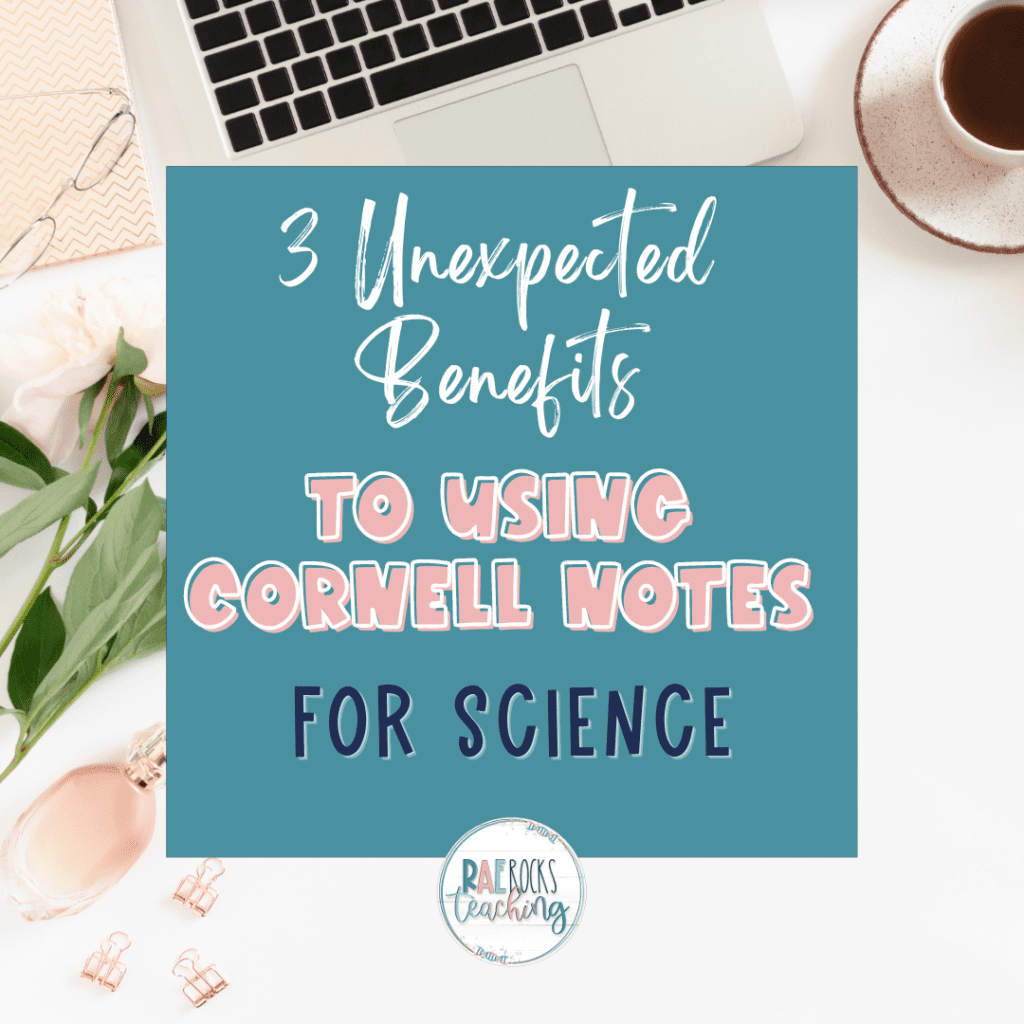If you have never thought about using Cornell notes for science, I encourage you to try it! I have used this as one of the ways my students take notes, and they definitely benefit from this format. I use a variety of other formats as well in order to keep it interesting, but this one is one of my favorites!
Looking for more ways to engage your anatomy students? Download your FREE ENGAGEMENT GUIDE today!
Cornell Notes for Science
If you are unfamiliar with Cornell notes, this is a note-taking method that allows for the main ideas to be written on the page instead of every sentence from the lecture notes. At the top of the page in the heading is the topic. Below the heading, the page is broken into 2 columns with room left at the bottom for a 5-7 sentence summary. Approximately 30% of the page on the left side is dedicated to the essential questions and/or vocabulary. The right 70% of the page is dedicated to answering those essential questions, defining vocab, or jotting down bullet point notes. There is simply not enough room to write tons, so students must decide what is important to write down. This is important for science because sometimes students can get bogged down in the details and miss the main idea.
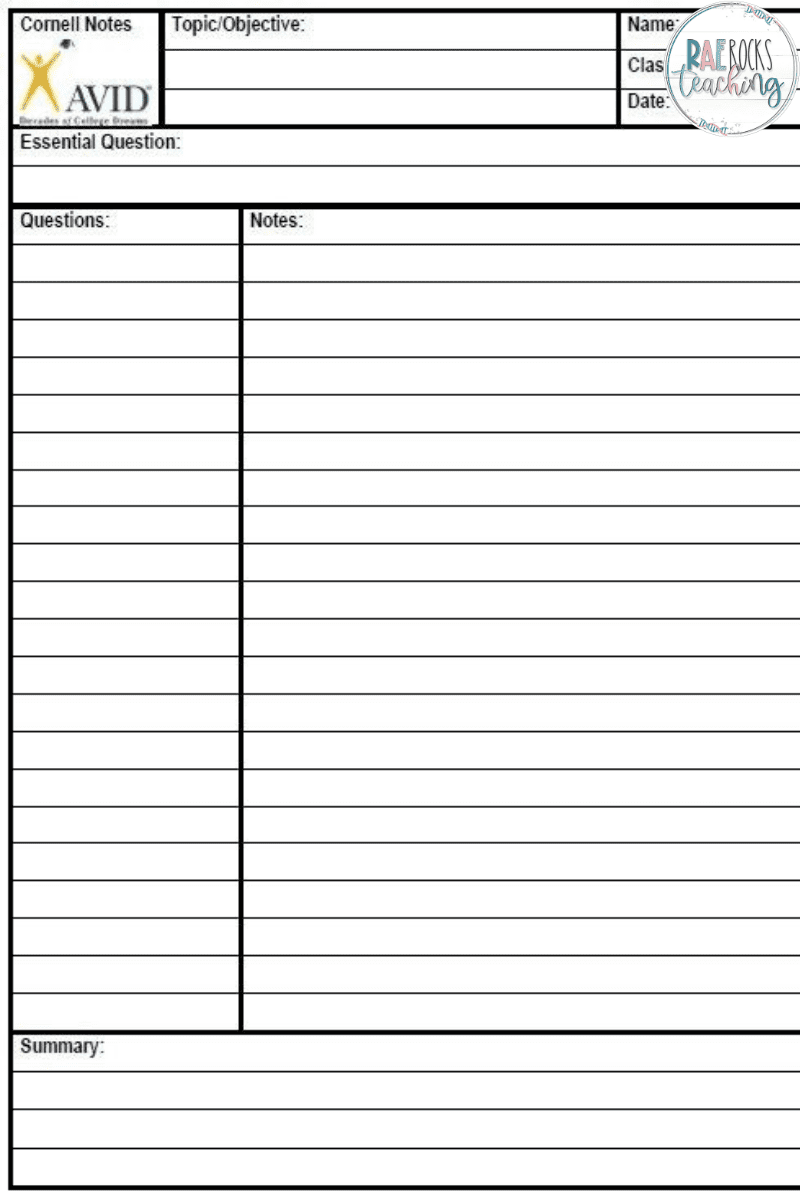
-
Save
Benefits of Cornell Notes in Science
In a study published by the Journal of Adolescent & Adult Literacy, Students in science courses implementing the Cornell Note-taking method had a 10-12% higher average than students in the previous semester not using this method (Donohoo, 2010). So let’s move on to the 3 unexpected benefits of using Cornell notes for science.
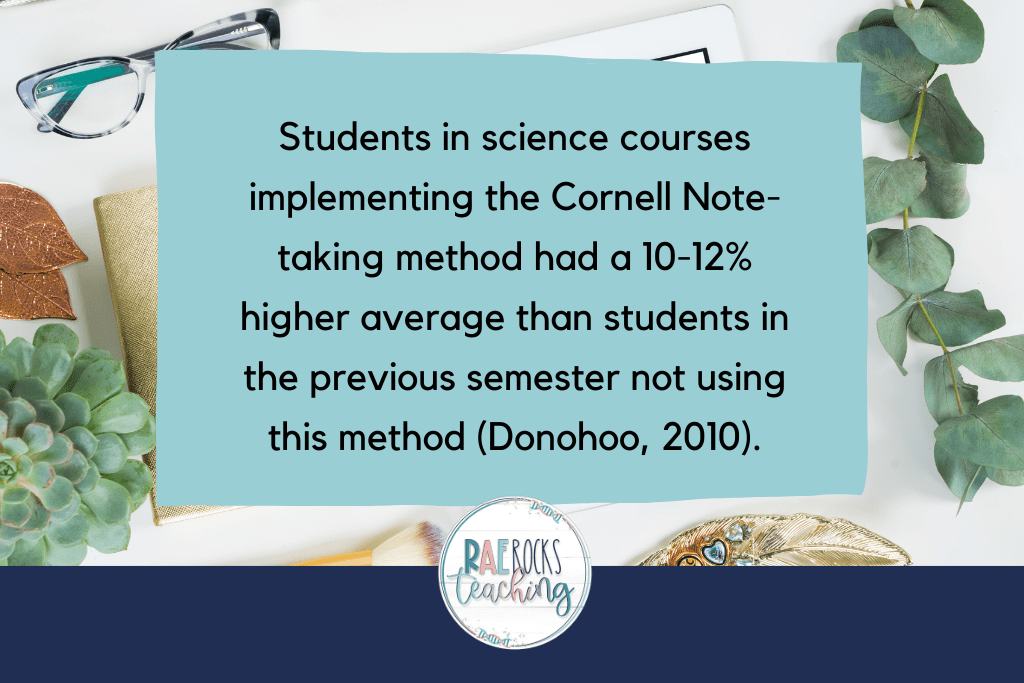
-
Save
ONE | Allows students to digest in small increments
This prevents students from those last-minute cram sessions. Since they took notes in chunks, they are able to review these notes daily in order to commit them to short-term and long-term memory easier. Having students summarize the main ideas at the bottom of their notes, forces students to evaluate each lesson and explain it in a few sentences.
TWO | Encourages students to organize their notes
This system allows students to keep their notes organized because they have to summarize the main points of a lecture without writing down every single word. The format of the note-taking method provides a framework that works well and looks clean. This helps to relieve note-taking anxiety by providing a proven framework.
THREE | It saves time when studying
This method allows students to save time studying because they have organized & clean notes. The notes are methodical in their structure and provide students with only the critical information they need to be successful in their exams. Since they have been summarizing each lesson at the bottom of their notes, they can review this section and feel more confident in their understanding. This also allows students to go back to ideas they need more review much quicker.
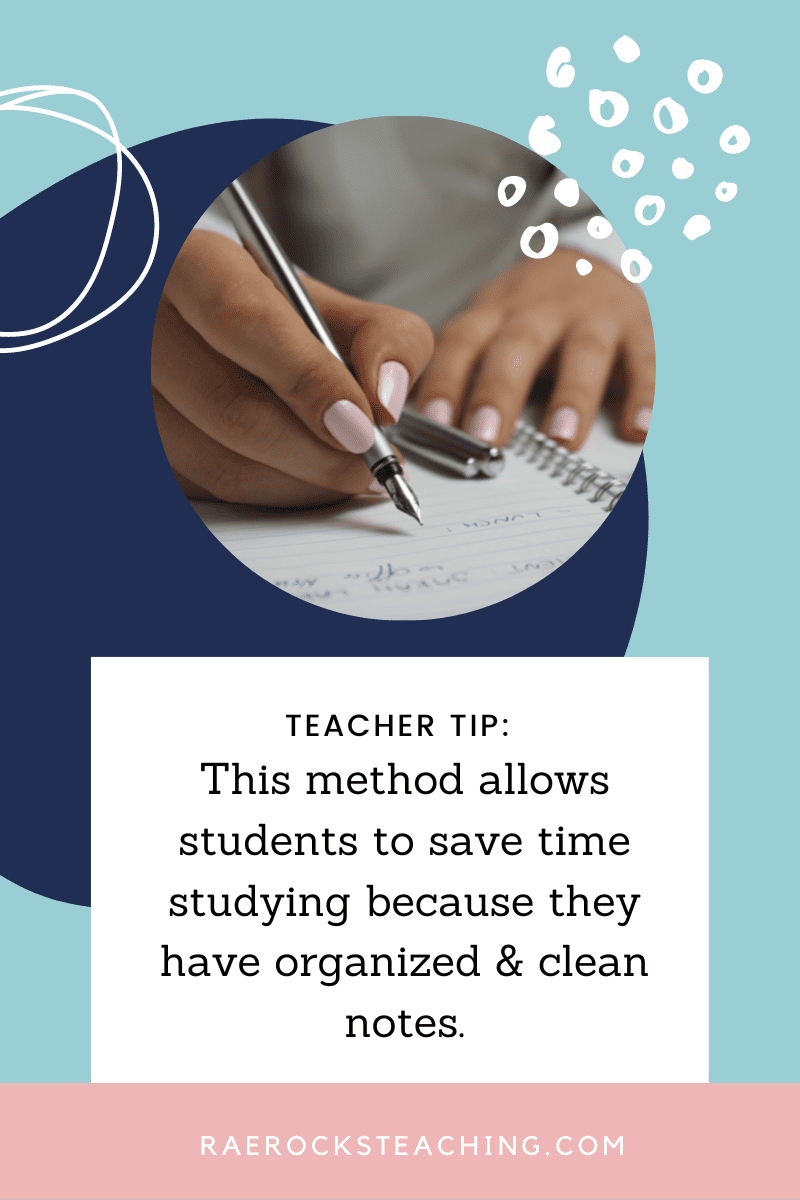
-
Save
Ways to Differentiate Cornell Notes in Science
There are some students who need more guidance and that’s ok! We all have different needs and this method allows for different approaches. Some of your advanced students could be let loose to complete their Cornell notes completely without guidance. However, there are many students who struggle with this. I recommend 2 ways to differentiate. One is to provide the essential questions so students know what information they should be looking for to write in their notes. Two is to provide the essential questions along with some fill-in-the-blanks in their notes section. Really you should try what you think would work best for your group of students.
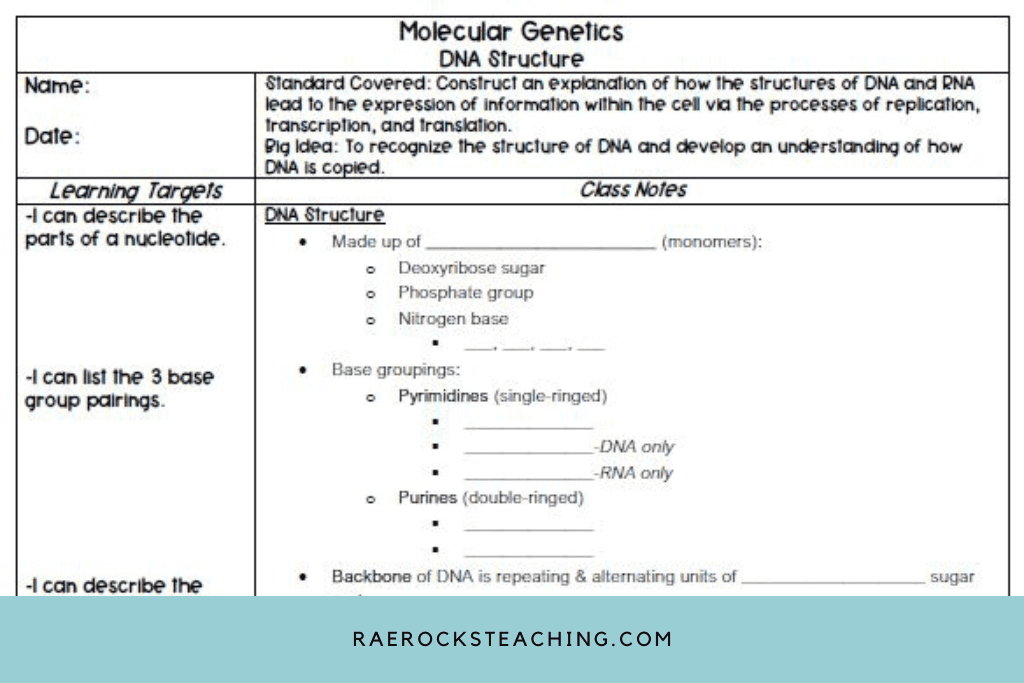
-
Save
In summary, Cornell notes are an effective way for students to take notes in science. I hope you have found this article helpful and given you some food for thought about note-taking.
Don’t forget to grab your FREE COPY of your Engagement Guide!

-
Save
I love sharing helpful content with y’all and would love to connect on IG or Facebook. I’m on TikTok too! Follow me and send me a DM with what you need more of because I’m here to help! If you are looking for even more inspiration, find me on Pinterest!
Wanna read more?
3 Simple Tips for Flipping Your Classroom Like a Boss
Benefits Behind Using the Flip A Classroom Model in Anatomy & Physiology
The Flipped Classroom and Technology You Need to Make it Successful for Anatomy
Reference
Donohoo, J. (2010). Learning how to learn: Cornell notes as an example. Journal of Adolescent & Adult Literacy, 54, 224-227.
Share via:

